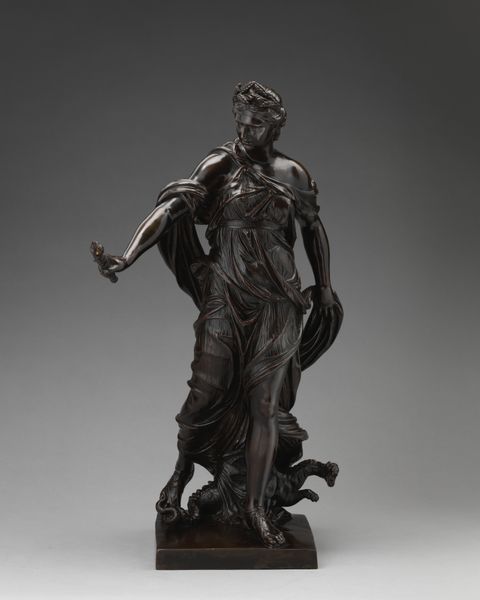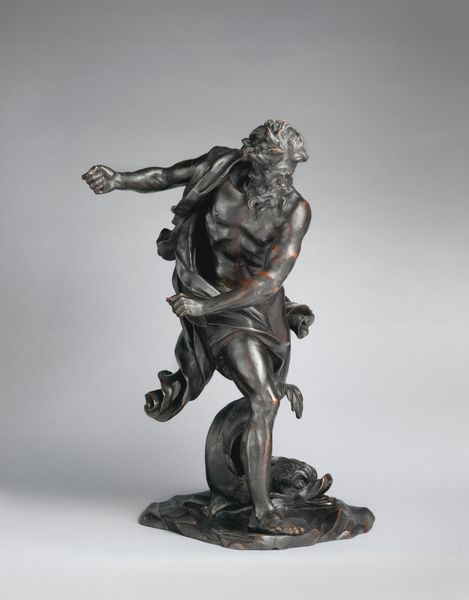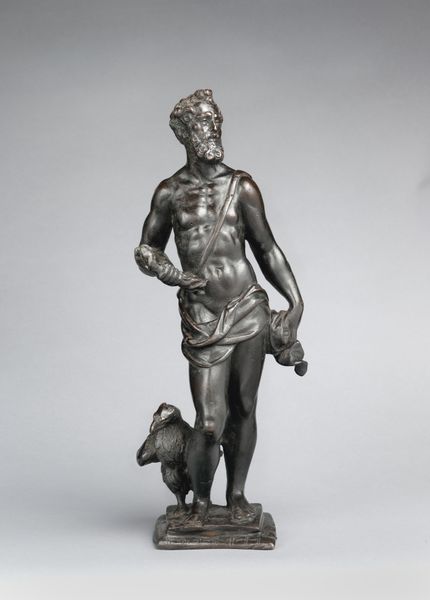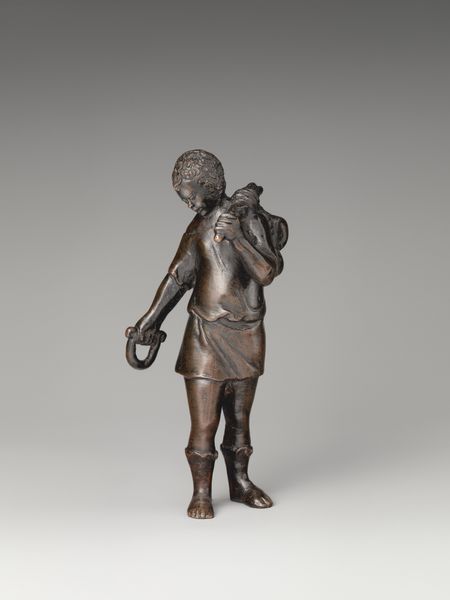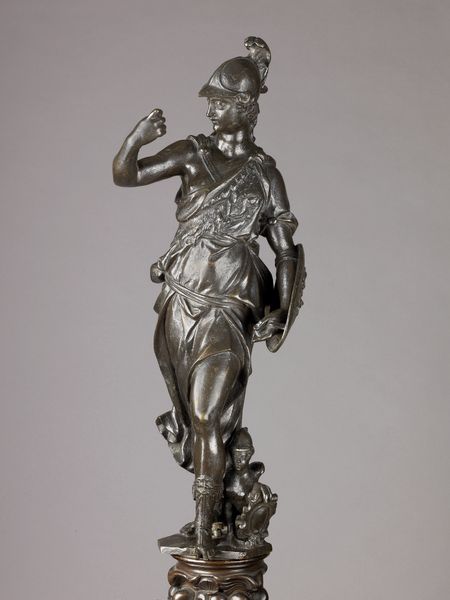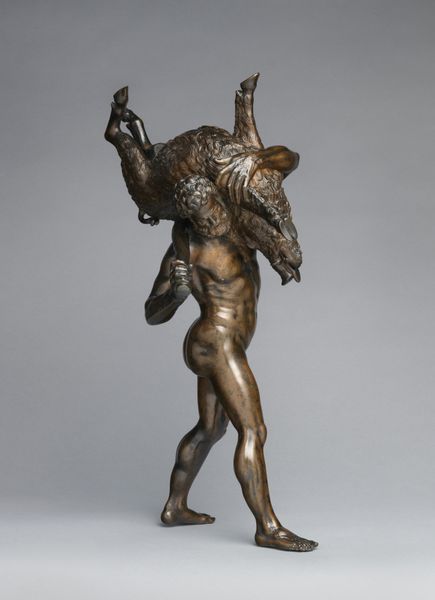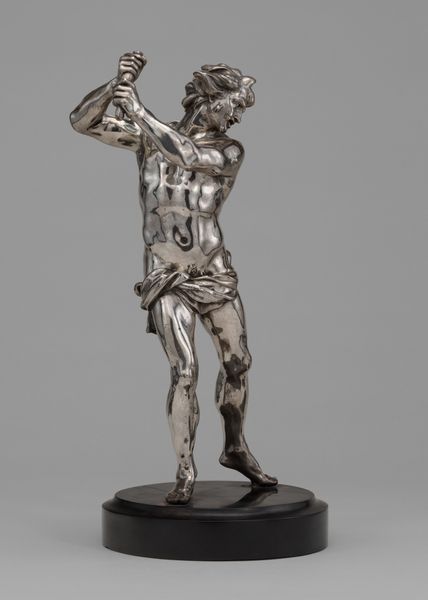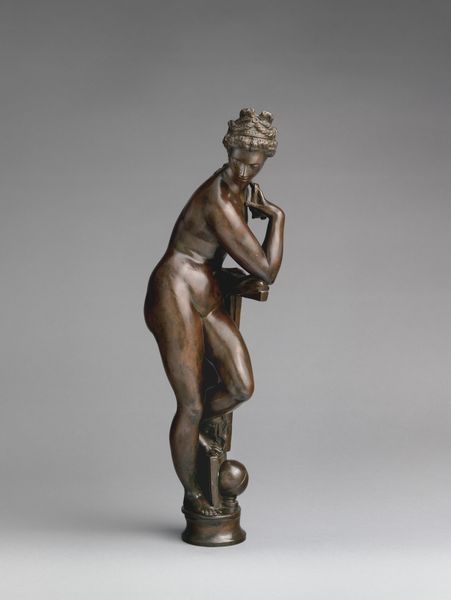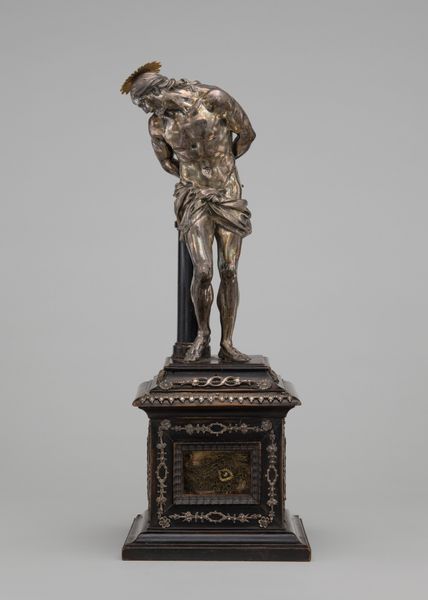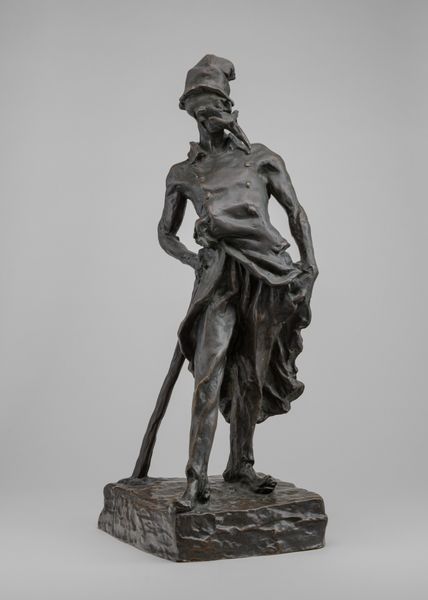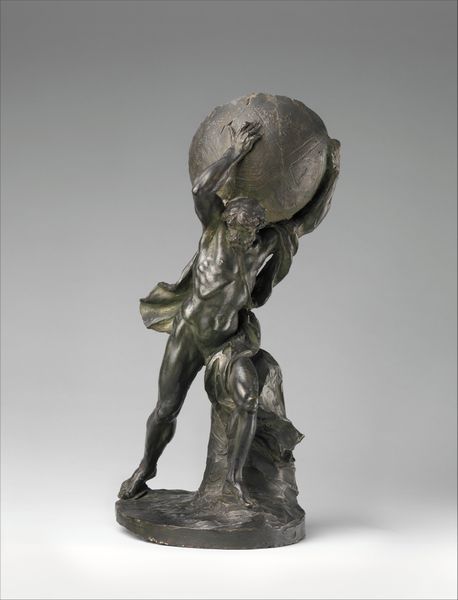
bronze, sculpture
#
baroque
#
bronze
#
figuration
#
sculpture
#
history-painting
#
decorative-art
Dimensions: Height: 18 3/4 in. (47.6 cm)
Copyright: Public Domain
Curator: What strikes me immediately is the raw, agonized movement captured in this small bronze sculpture. He looks almost… trapped. Editor: Yes, that frozen motion is powerful. We're looking at Giovanni Battista Foggini's "The Suicide of Ajax," dating from about 1685 to 1695. It depicts a moment of profound tragedy, immortalized in bronze. What stylistic qualities stand out for you? Curator: For me, it’s how Foggini turns despair into something so overtly dramatic. Look at the billowing cape, the upward gaze – it's almost theatrical, embodying a really high baroque aesthetic. There's definitely something emotionally charged, but there’s an unsettling feeling that it is also staged, deliberately grandiose in its portrayal. Editor: The dynamism inherent to baroque sculpture is certainly on display. Note how the figure twists and turns in space, urging you to view the sculpture from multiple angles, in a full, formal unveiling. Semiotically, the sword he holds isn’t just a weapon; it's an emblem of his honor, or lost honor rather, which seals his fate. Curator: Right, a bit of backstory, and this bronze comes alive. Ajax, a hero of the Trojan War, was driven to madness and humiliation. He wanted revenge on those who dishonored him, but being thwarted, he decides suicide is his only way out. I keep circling back to how this intimate scale almost domesticates the immensity of the tragedy. Makes me think we're all a little Ajax sometimes. Editor: An interesting parallel! In any case, there’s a controlled chaos on display which channels raw emotion in such a compressed format; the work’s physicality truly enhances its conceptual potency. What do you suppose someone centuries removed makes of the drama represented here? Curator: I suspect a viewer now could perceive the vulnerability within Ajax's desperation—and maybe even see a dark kind of nobility in reclaiming one’s destiny even in the face of annihilation. So really, perhaps something deeply human, and therefore eternally relevant, at play here. Editor: Precisely; an intimate window into humanity that also holds universal echoes still. Thank you.
Comments
No comments
Be the first to comment and join the conversation on the ultimate creative platform.
